Sewing Machine Maintenance: Give That Baby Some Love
Sewing machine maintenance is something I like to remind myself and all those within earshot about around the first of every year. It's not glamorous, but it's necessary. Because for some people, their car is their baby. For other people, their baby is their baby. My main squeeze, however, is a bit smaller than a car, but just as powerful. It's heavier than a baby, but just as cuddly.
Have you guessed it? My baby is a sewing machine. A BERNINA 770QE to be exact!
Just as it's important to wash and care for a car/actual human baby, the same is true for caring for your sewing machine. Sewing machine maintenance may not sound all that exciting, but if you really love your sewing machine, you’ll know that it’s more than just cleaning a crafting tool (and if you don’t love your sewing machine, it’s actually a great way to get to know more about its parts, and how they work together (more on that in this blog post - How Sewing Machines Work.)
For more info on buying a sewing machine, check out any of these articles:
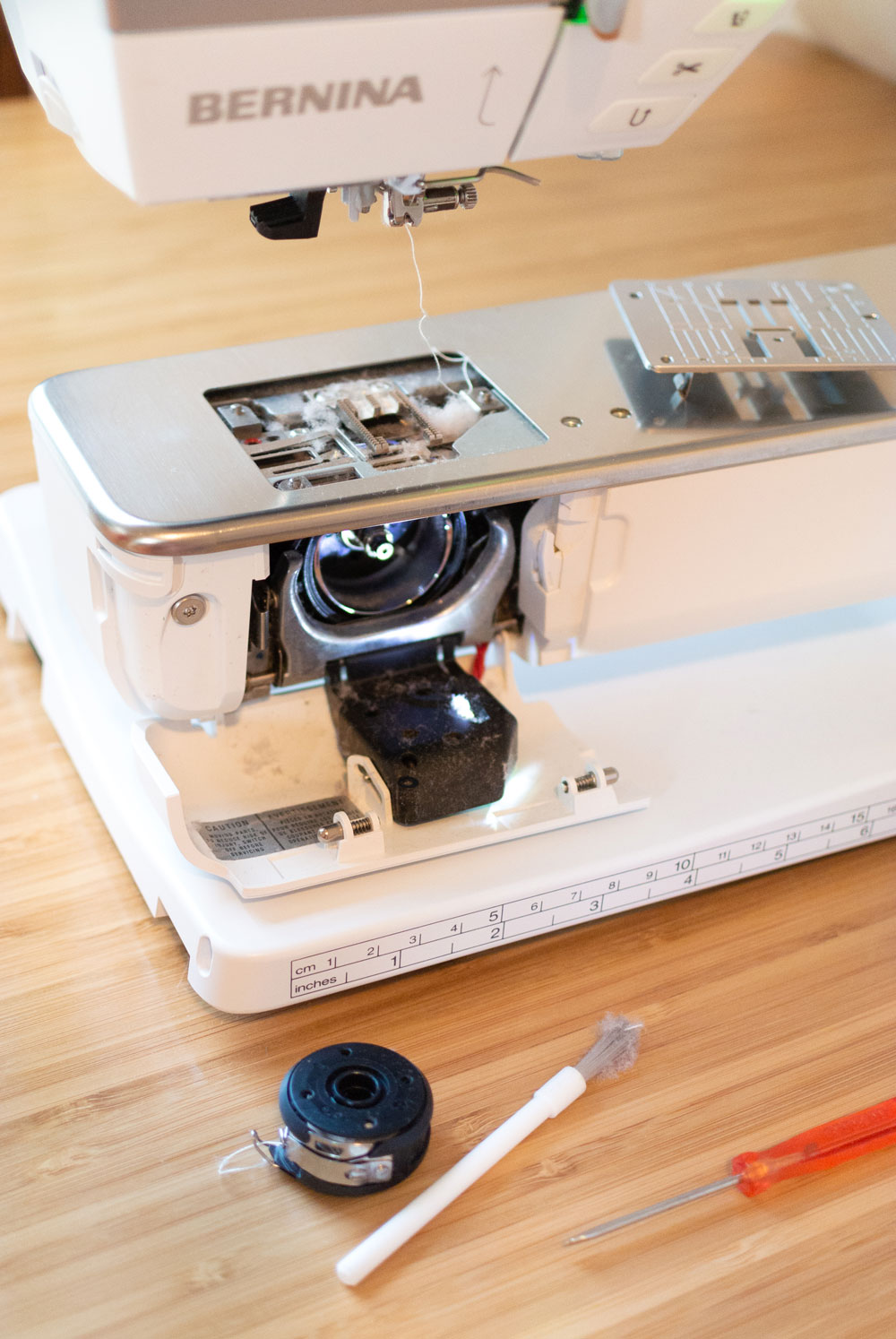
Basic Sewing Machine Maintenance
Here are the basics to knowing, loving, and maintaining your sewing machine:
Trending patterns!
1. Oil ‘Er Up.
If you’re someone who doesn’t pour through the instruction manuals of things you buy (like… everyone?) you may not know that sewing machines need to be oiled regularly. What do I mean by regularly? Well, that depends on how frequently you’re firing that sewing machine up. If you’re an every-day kind of sewist, you should think about oiling your machine once a week, just to keep it running smoothly with that rigorous workload you’re giving it. If you sew less often, maybe once a week, or even less than that, look at oiling your sewing machine every one to three months.
Ahem… where does this oil go? Is it a massage sort of situation?
Good question. To oil your machine, place 2-3 small drops of sewing machine oil in the bobbin case area, on the needle bar, and also where the handwheel meets the side of the machine. Your sewing machine will thank you (probably not with words, but by working properly!) Check your sewing machine manual if you're still unsure about where. There's probably a diagram!
Keep in mind: It’s better to oil too little more often than too much at once. And right after oiling, stitch for a minute on some scrap fabric so you work all of that oil out before getting back to your project.
Here is a video I have found really helpful. If you are not sewing on a BERNINA, look up your specific brand on YouTube. I'm sure there's a video.
2. De-Lintify.
Now, I know it’s tempting to take two mighty aerosol cans of air and go at your sewing machine with one in each fist, yelling “WELCOME TO THE REVOLUTION, LINT!” but that may not be the best idea… though it’s probably the most entertaining.
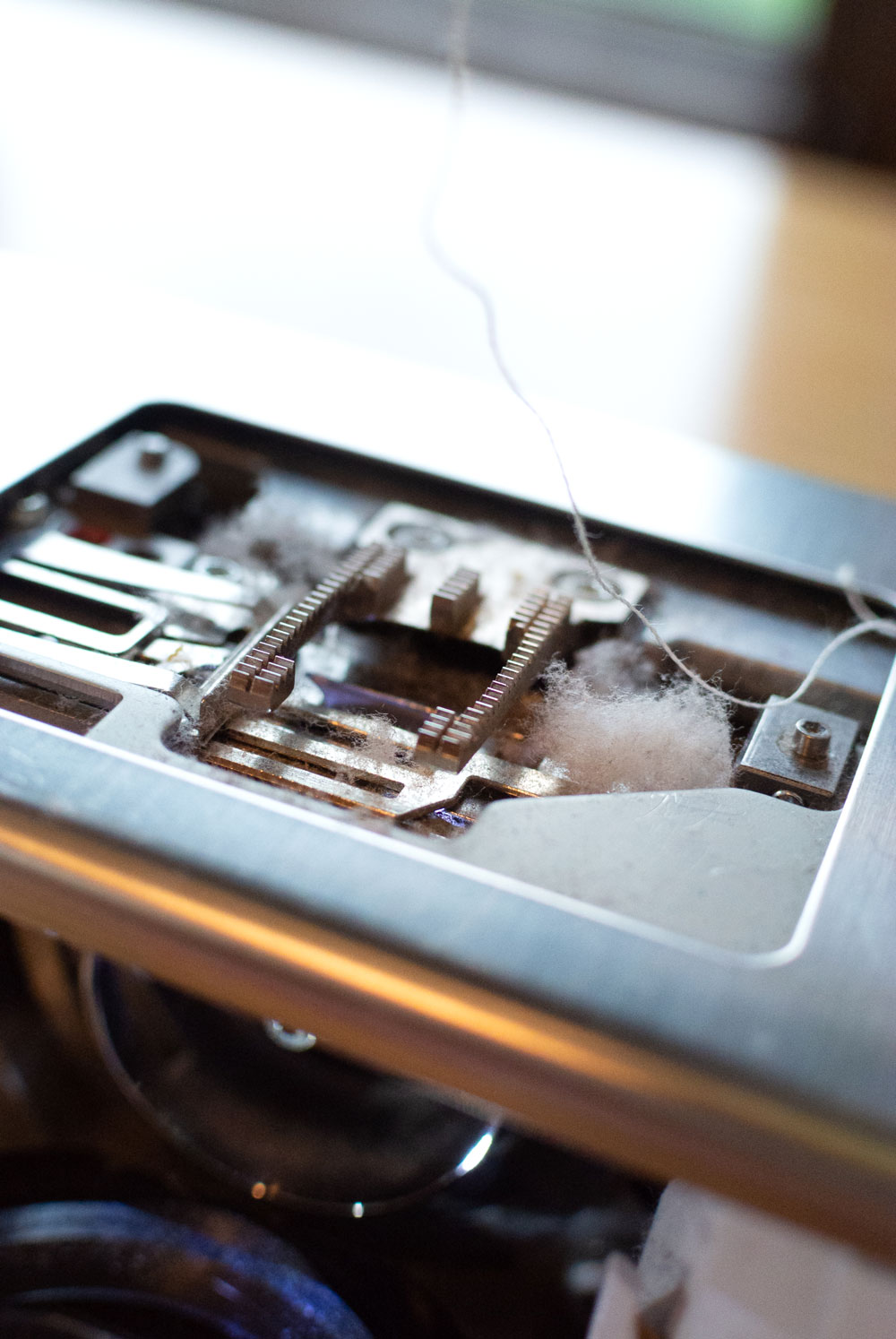
Rumor has it that using air cans on your machine as a whole can do more harm than good by forcing lint and dust even further into the depths of your beloved sewing machine. If you do use canned air at all, make sure you spray the air at an angle so you are always blowing lint OUT of your machine, rather than into it.
More effective tools include:
- A lint brush (Even though one usually comes with your machine, eventually, they get gunky. Think about getting a new brush once a year.)
- A muslin cloth (I like muslin because it’s super soft.)
- A gentle lambs wool duster (attracts dust without the use of chemicals)
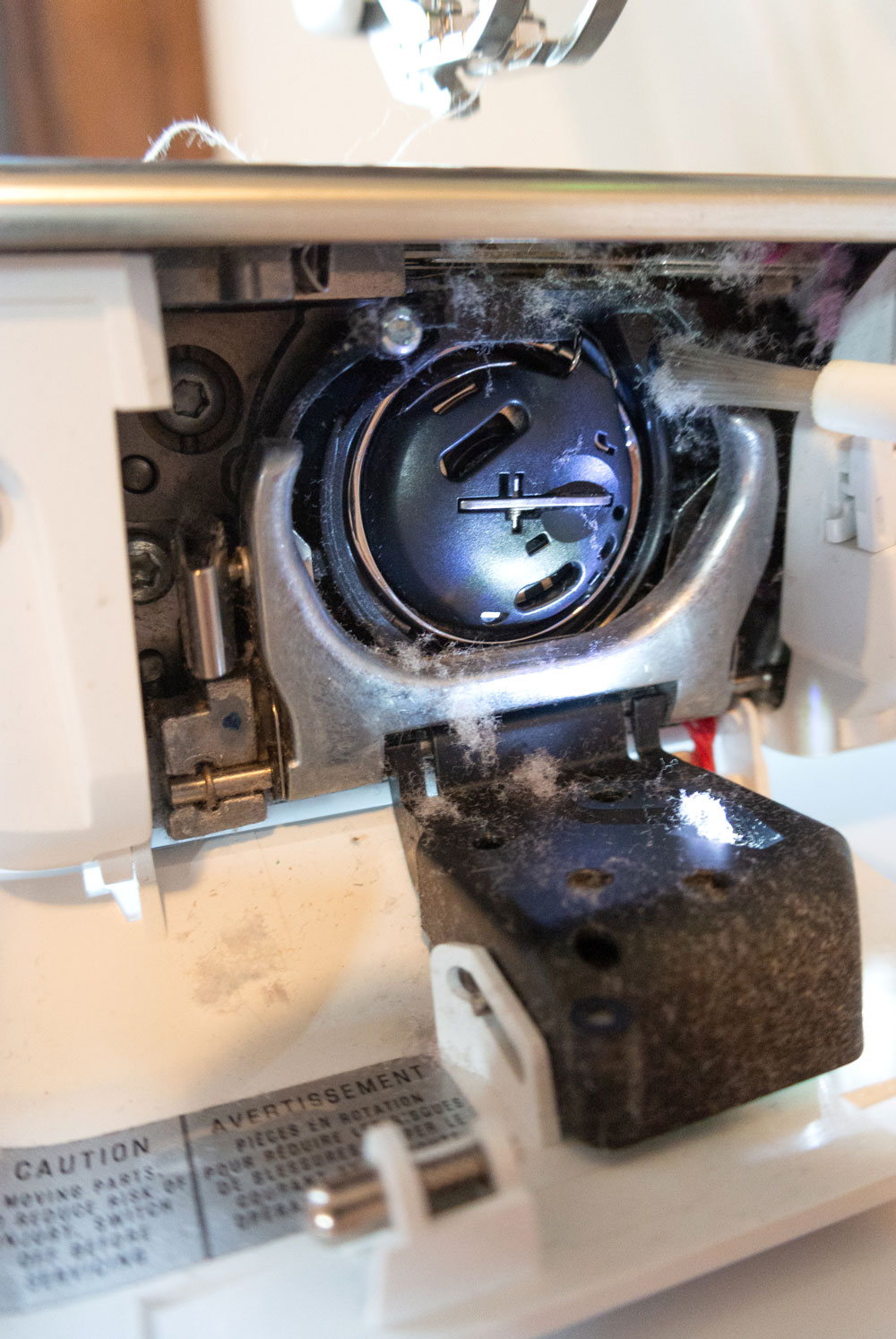
Before cleaning out your machine, unplug it. I know, I know, you’re not stupid, but I had to say it. Remove your needle (maybe it’s time to replace it, anyway? Keep reading for more about that), and follow your instruction manual to remove the presser foot, the bobbin, the needle plate, and the bobbin case. Now, you’re ready for some cleaning action.
Use your lint brush to GO AT these separate components like a cleaning fiend, making sure you get all of the lint and gunk out before carefully placing them back where they belong.
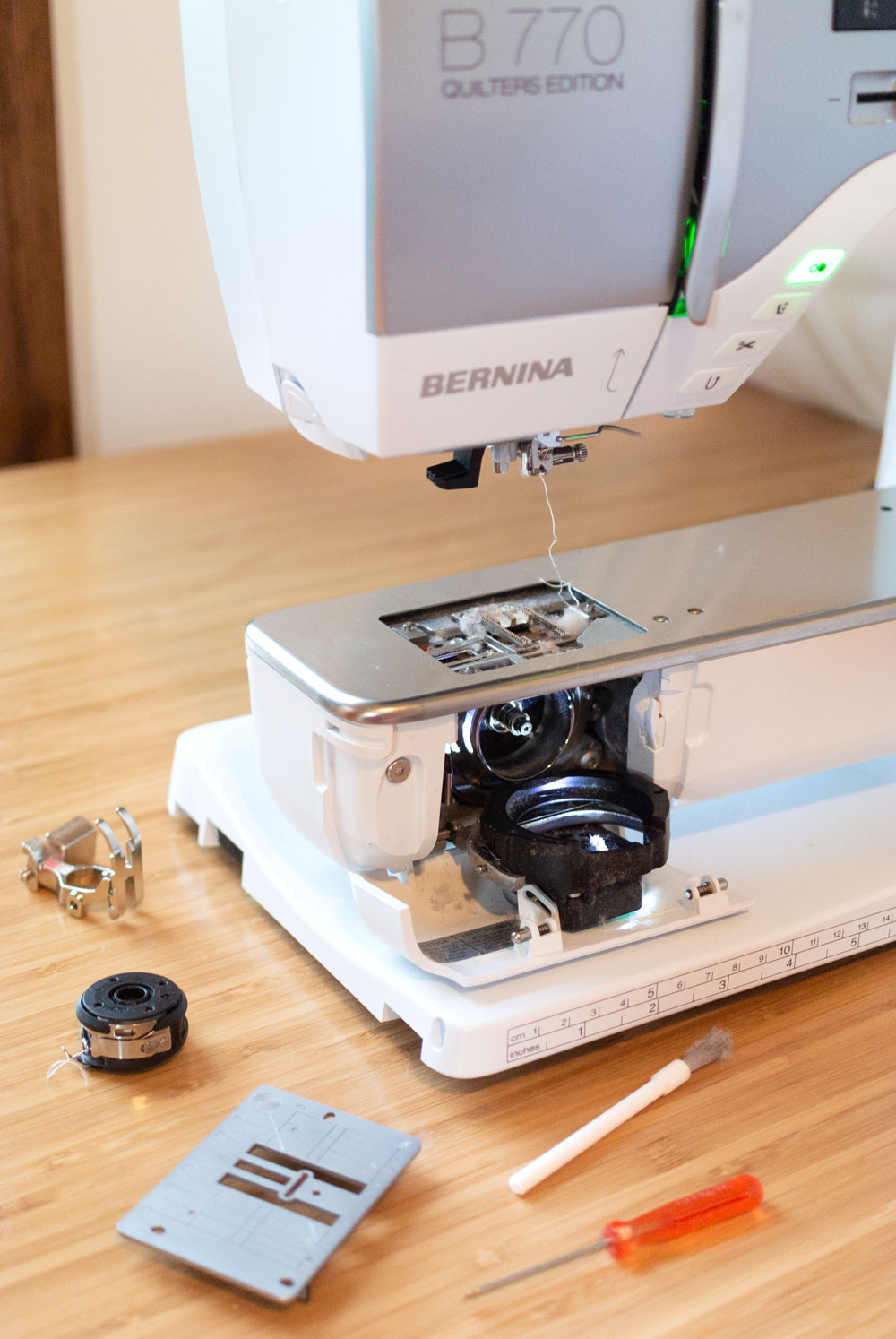
One more thing NOT to use: your breath. It’s tempting to blow dust and lint out of your machine with your handy, built-in lungs, but your breath actually contains moisture that can cause corrosion in your machine! Who knew you were so dangerous!
3. Re-Needle.
This is a biggie. You guys, when you sew, your sewing needle passes through fabric A THOUSAND TIMES PER MINUTE. (possible exaggeration, but I'm sure it's close) That’s why it’s so easy for sewing machine needles to get really dull, really fast. I recommend changing your needle after 4-6 hours of sewing time, since that’s like, a million uses already (don’t check my math, trust me that’s correct.) It’s also smart to use needles that are compatible with the thread you’re using, as well as the fabric.
These Universal needles work on pretty much every machine.
And what will happen if I don’t heed this advice?
I’m glad you asked. SEWING NIGHTMARES like skipped stitches, broken threads, runs and pulls and even (gasp!) machine damage can follow! These are the things that haunt my dreams! Change your needles. A lot. They're cheap! Treat yourself to a few packs so that you always have them on hand.
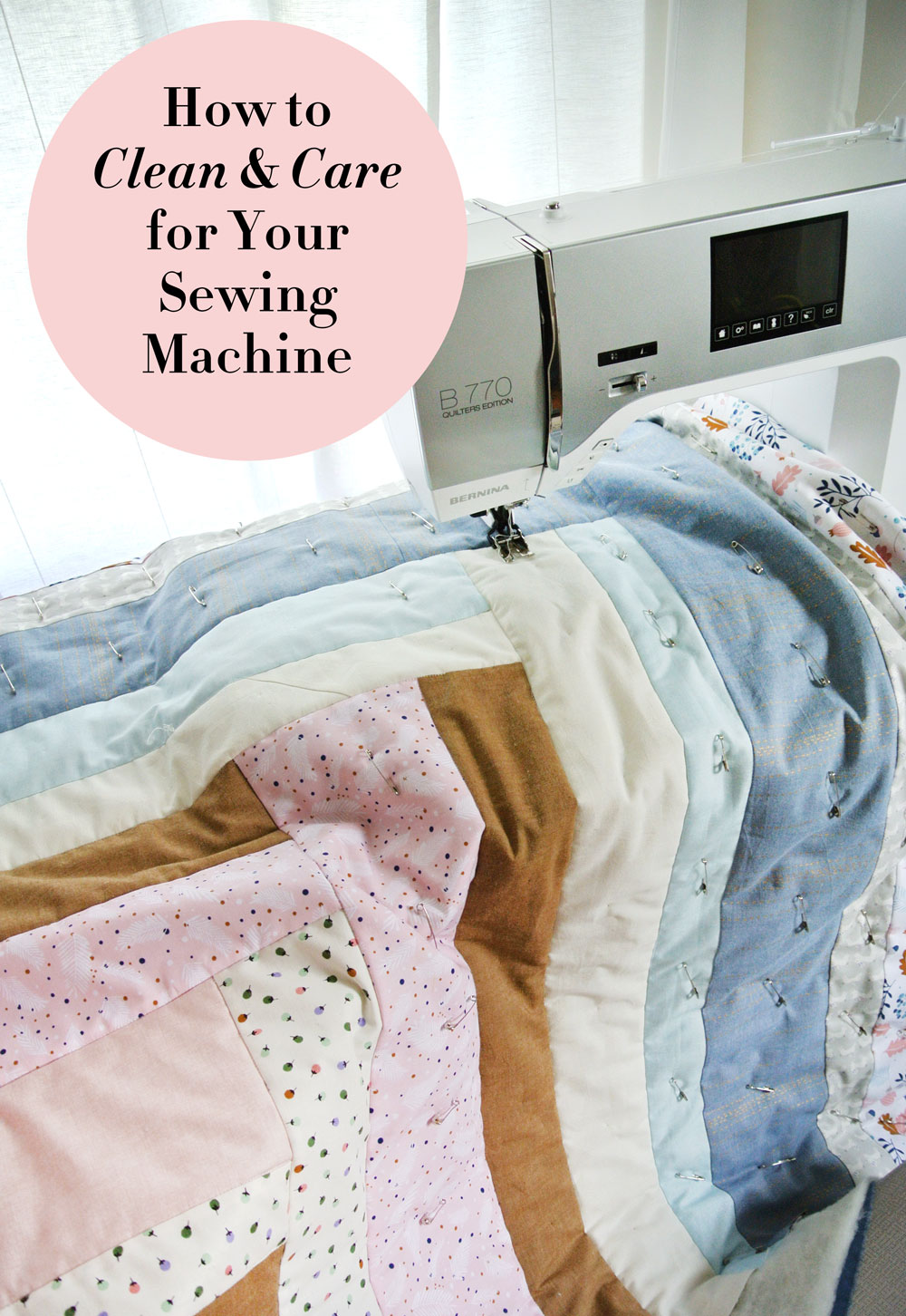
4. Go Undercover.
When you’re using a machine to sew fabric, things are going to get linty. But if you leave your sewing machine out in the open, it can get a lot of other stuff stuck in it as well, like dust and dirt, and even animal hair. (Or, if you have this habit of snacking at your sewing space, all sorts of exotic and delicious materials can find their way onto your machine!)
The best thing you can do for your sewing machine is get it a cozy little cover. You can get a plastic cover from most machine dealers, or you can make one yourself (because you can sew, duh).
5. Get Served.
All brands are different, but no matter what make or style you’re rocking over there at your sewing station, it’s smart to get your sewing machine serviced regularly, about every 12 - 18 months. This is like the annual physical you get (er… forget to get) from your physician. It means carting your machine over to a professional for a good once-over, and some TLC if it needs it.
Now, you know the basics of sewing machine maintenance. Both your sewing machine and I are so proud of you. Any tips or tricks I may have missed? Shoot me a comment below!
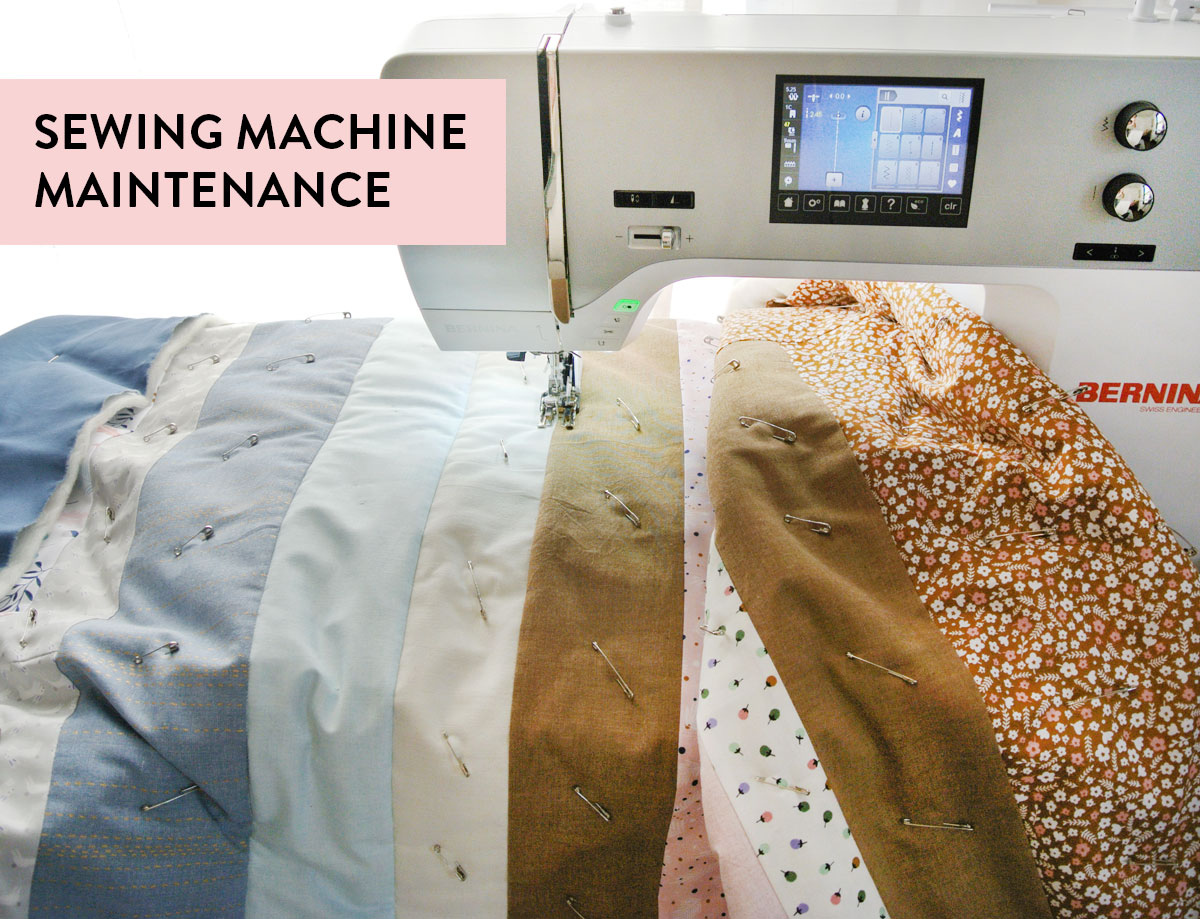
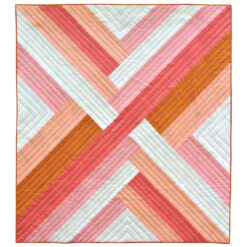
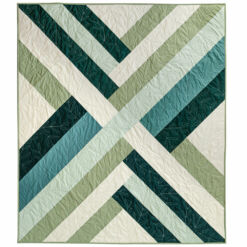
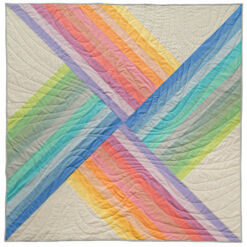
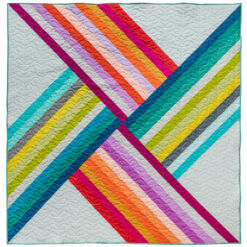
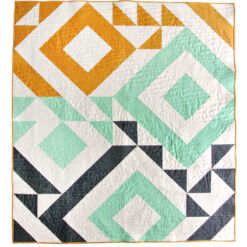
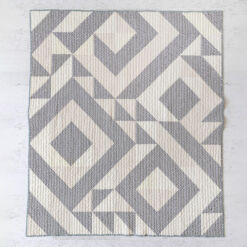
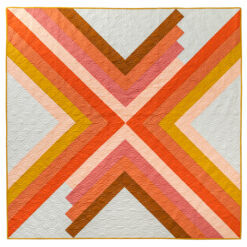
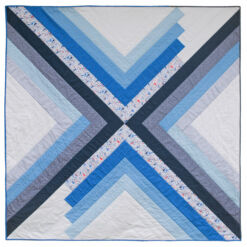
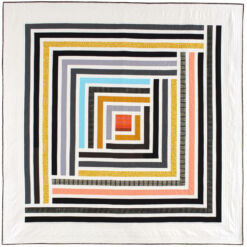
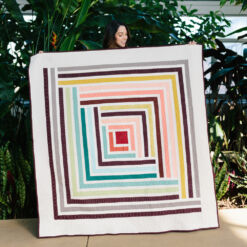
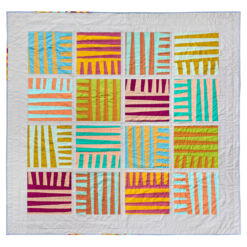
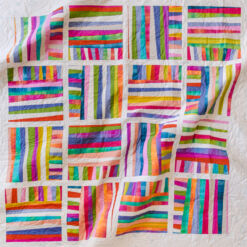
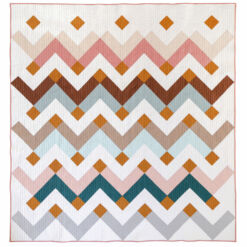
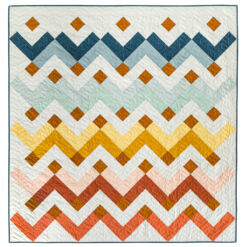
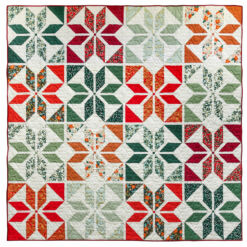

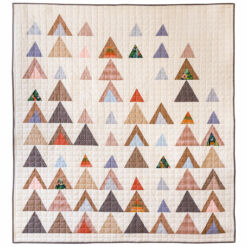




Great post! I just started working at my Bernina retailer and the certified service tech says oil every two full bobbins, which was definitely news to me. I was oiling at the beginning of every day! Too much oil is just as bad as not enough, apparently!!!
Good to know! Great comment, Laurie!
Thanks, Suzy! I sure needed to read this today! I thought my slipped stitches were from sewing too much flannel with my walking foot recently. 🙈 My sweet little Brother Innovis 40 is going to have a spa day and get a fresh needle.
Thanks for all the fun and goofy Instagram stories, too. You and Scrappy have a good thing going on! 💕
Hi Eileen,
I also owned a Brother Innovis 40 for several years, probably close to 5 years. I have to say that I loved that machine as much the day I sold it as I did the day I purchased it. The only reason I sold it was so that I could upgrade to a Janome 6500P, which gave me more throat space for advancing my Free Motion Quilting. Now I wished I had kept the Brother for Quilt Guild meetings & classes as the Janome is somewhat large to carry around very often. I hope that you love yours just as much…..
What oil do you recommend, and where can I buy it? I have the same machine as you. I’ve looked on web sites, and they all look the same. I generally go to Amazon, because there are not brick & mortar stores near where I live.
Thanks.
Check out this oil. It’s high quality and should work great.
Thanks, Suzy!!
Bernina recommends using mobile velocite spindle oil number 6 on the 7 series machines. Amazon sells it by the quart or gallon. Kind Bernina Jeff on youtube. He has a wealth of information.
Great, informative review of maintenance. I knew there was a reason I don’t use canned air!? I love referring back to these 😂
I will definitely stop trying to be the big bad wolf and huffing and puffing all the lint out of my machine from now on. Needle change and oil are also going to happen today! Thanks for the great post Suzy.
Hahaha! Stop that huffing and puffing! 😉
Great tips! The Juki technician says never oil. Bring it to him once a year. My old Singer needs oiled regularly. Do you have hints about erring on the side of caution with my Juki F400? I feel the need to oil, but so far I’ve resisted! 🙂
I may be writing a second reply to this because I thought I answered, but now it looks like it disappeared. Anyway, I don’t know much about Juki sewing machines, however not oiling your machine for a year makes me nervous. There’s so much metal on metal action happening! If I were you, I’d get a second opinion about that from a different dealer. If that dealer tells you the same thing, well, then I guess you have your answer. Good luck!
I have a Pfaff and my manuel tell me NOT to oil so I don’t.
Really? No oil at all? Well, better stick to your manual.
Modern Pfaffs and Vikings DO NOT get oiled unless by a service technician. I’m sure some of the other brands are the same way. Vintage machines need to be oiled regularly, but current computerized machines can be damaged by over oiling or lubrication getting into the wrong place. A certified service tech will ensure that the machine gets the correct oils and in the right spots to avoid damage.
My Husqvarna didn’t get oiled. It’s a big adjustment for someone used to doing it!
I appreciate the links to your other articles, too. I got a new BabyLock 2-3 years ago and love it but recently discovered it is not as well suited to bagmaking as it is to garment sewing and quilting. Since I do like to do some heavy duty sewing every once in a while I might be looking at a second (okay maybe a third (I have a serger) or a fourth (my friend gifted me her mother’s vintage Singer complete with refurbished cabinet and original accessories)) machine. I might have a sewing machine addiction!
I also just found this video on how to clean AND oil a Juki. I am interested to hear why your dealer says not to do that. Maybe it’s your specific machine? I’m suspicious. https://www.youtube.com/watch?v=Gk2sgYcbkYk
This video is for a juki 2010Q machine which is an all metal industrial type of machine so yes it needs to be oiled according to the owners manual instructions. The Juki F400 is a different type of machine and if the service person and owners manual says not to oil until it is serviced, then you should not oil. I believe it is usually recommended to get your machine serviced once a year. Many machines are more plastic than metal and many machines you are NOT suppose to oil unless they are being serviced such as my 2 Janomes, my Janome DC 2010 and my Janome Horizon Memory Craft 7700qcp.
Hi Tricia, thanks for your comments regarding your Janomes. I have wondered about the oiling of my Janome 6500P because my owner’s manual doesn’t address that issue with regards to owners oiling their machines.
When I bought my Janome 2030 QDC and read the manual it says not to oil but when I asked the owner of the sewing machine store she said to add 1 drop each month in the bobbin hole. I bought the oil that was recommended and I do it regularly. I’m a little confused why Janome thinks this machine shouldn’t be oiled.
That is very odd. It might be worth reaching out to Janome customer service to see what they say.
Sounds a lot like the tech is recommending no oil so you are forced to take you machine in for expensive repairs when it siezes.
Thank you for your interesting education. These are things I didn’t know or were afraid to do on my own. I try to keep my sewing area clean, but my machine is worth more than that! I’ll try to keep it up.
It’s so easy to forget!
That’s wonderful news too know, I have a Juki F600 and I can’t find anything about oiling it anywhere. So I will try your suggestion. Thanks so much for your advise.
A few comments above I link to a video on oiling a Juki TL-2010Q. Maybe that’s similar? Your machine manual should show where to oil. If you no longer have the manual, you can most likely find the PDF online by doing a Google search.
Awesome post! I love hearing about “behind the scenes” with Suzy…great tips. Keep em coming! And TU ❤️
Hi, Suzy: Thank you very much for the extremely useful tips and reminders on sewing machine maintenance. And I’ve meaning to express my appreciation for your wonderful free patterns too! It’s very generous of you.
Thanks for the sweet comment! It’s my pleasure 🙂
Thank you, I do try to keep my machines in good working order, but have forgotten recently 🙁 Must buy some machine oil. My overlocker/serger just had a service visit – the first since I bought it 32 years ago, amazingly it was okay 🙂
It’s never too late to do a little sprucing up 😉
It really helped when you mentioned how you should take the time to oil your sewing machine if you use it every day. I understand that taking the time to do this can help you save a ton of money on maintenance and avoid accidents when sewing. As I see it, it is a good idea to consult with a professional and make sure you know how you can best care for your machine and get more tips like the ones you have listed.
Hi Suzy – where do you oil the hand wheel on your machine?? I have a B770QE and the wheel has a bit of a squeak but they did not tell me to oil the wheel. Any information would be great!
The wheel on the side of your machine is squeaking? hmmm…you may want to call up your dealer and ask them about that. As far as I know, there are only three spots where you should be oiling the machine and the are all located on the metal hook in the bobbin area. Here’s a great video to show what I mean. Sorry I’m not more help!
I guess I misread your article where it references oiling where the handwheel meets the side of the machine. Thanks for the video link, it’s great 🙂
Oh man. I’ve had my sewing machine for almost a year and I’ve never oiled it. I’ve made two quilts with it! Ah! I just ordered the oil you mentioned above and my baby is getting the full treatment the minute Amazon delivers it to me. Thanks for this post! I wish I had found your blog sooner!
Your sewing machine will thank you 😉
Thank you for including sewing machine maintenance on your blog. I won a JUKI machine at the Pigeon Forge Quilt Convention and lost the CD that came with it. I need to learn how to take the bobbin case out of it as I’m sure there is lint down there. I may take it to a dealer and pay him to show me how to get that part out so I can clean it.
Oh my gosh! That video shows her running her machine with the foot down directly on the feed dogs! NEVER do that! You chew up the bottom of your foot! Always run it to spread the fresh oil without the foot attached if your machine requires the foot to be down. Either that or put some fabric in between the foot and the dogs.
OMG that machine was full of FUZZ!!!!
I just checked the manual for my Babylock Crescendo and it says that for my machine you should absolutely never oil it yourself 😬 guess all manufacturers are different so read your manuals 😊
My baby lock soprano says the same
My Bernina works like a charm. I’ve had it for a long time. One of the best investments that I ever made. I usually love custom made things and thus this love for it -:)
I’m needing to purchase oil for my Bernina Sewing Machines. What specific oil should I buy/use for the 1260, Artista 165 and Activa 220?
That’s a question for a BERNINA dealer. I’m guessing the oil is the same for all machines.
I didn’t have a little lint brush, so I used the little interdental toothbrushes you can get from the pharmacy – worked like a charm!
Just a note: Remember to put something, anything, under where the needle goes so that it doesn’t fall through if you drop it. LOL! Been there, done that!
follow your machine’s manual.
some machines need oil and those with plastic or nylon
fittings usually don’t.
Use sewing machine oil, not 3-in-1 multi purpose oil.
I use Singer oil in my Bernina.
My walking foot on my Janome squeaks and makes lots of noise. Could I oil that??? Thanks Suzy. You are the best!
You definitely can! Once you oil it, rub it down with a soft cloth, then give it a test run on some scrap fabric to make sure it doesn’t get oil on your quilt.
Some machines with plastic or nylon bobbins and bobbin case areas do not need
to be oiled. Removing the lit, yes. I would follow the specific machine’s instructions
and check with your machine dealer.
I havea small suck and blow vac designed to clean computers. It has brush, etc nozzles and I use the suck out end on my machine before I start poking with a brush or something. Gets the worst out before I accidentally push it where it shouldn’t be. Lots available on Amazon.
I’m dying laughing!!! Welcome to the revolution, Lint!! hahahaha!! Best way to start my day, thank you!